The Prusik knot was invented by Dr Karl Prusik (sometimes spelled Prussik) in the early part of last century. The benefit of the knot is that it when weighted, it grips the rope that it is tied around. When the weight is removed, it is free to slide. This enables it to be used in a number of self rescue situations. The knot must be tied with a rope of diameter less than the main rope, as the effectiveness of the knot is reduced the closer the two ropes are in size. 6mm cord around double 9mm abseiling rope is usually sufficient. The number of turns can be adjusted to suit the conditions. More turns means greater friction. There are numerous other knots these days that perform the same function, and this knot has largely been superseded. The one advantage that the Prusik knot has is that it is symmetrical, so is effective regardless of the direction of pull. The Klemheist tends to be a little better if you want pull in just one direction. |
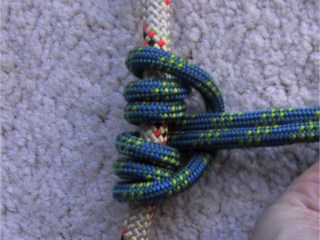 |
The description assumes that you are tying the knot with a prusik loop (a short piece of cord tied into a loop). Make a bight with the end of the cord, and pass it under the main rope. |
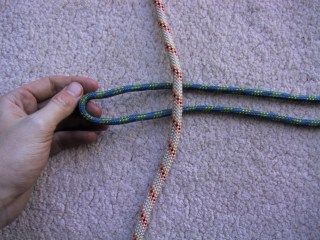 |
| Pass the end with the knot around the main rope ... | 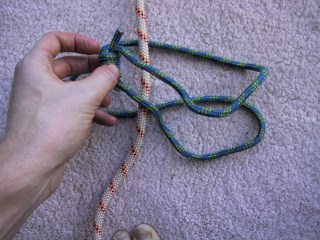 |
| ... and through the loop formed. | 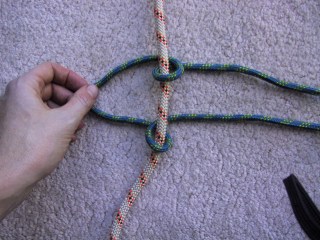 |
| Repeat this process, passing the end with the knot through the loop. | 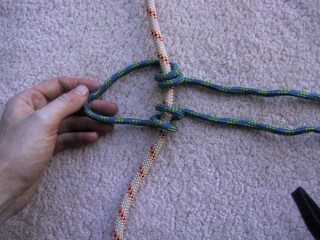 |
| And once more. | 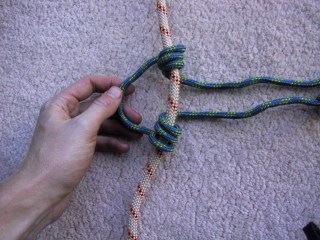 |
| Pull the knot tight and set it neatly. | 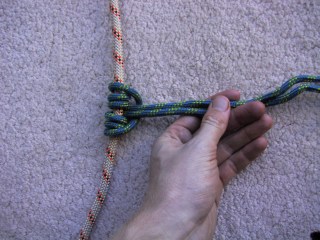 |